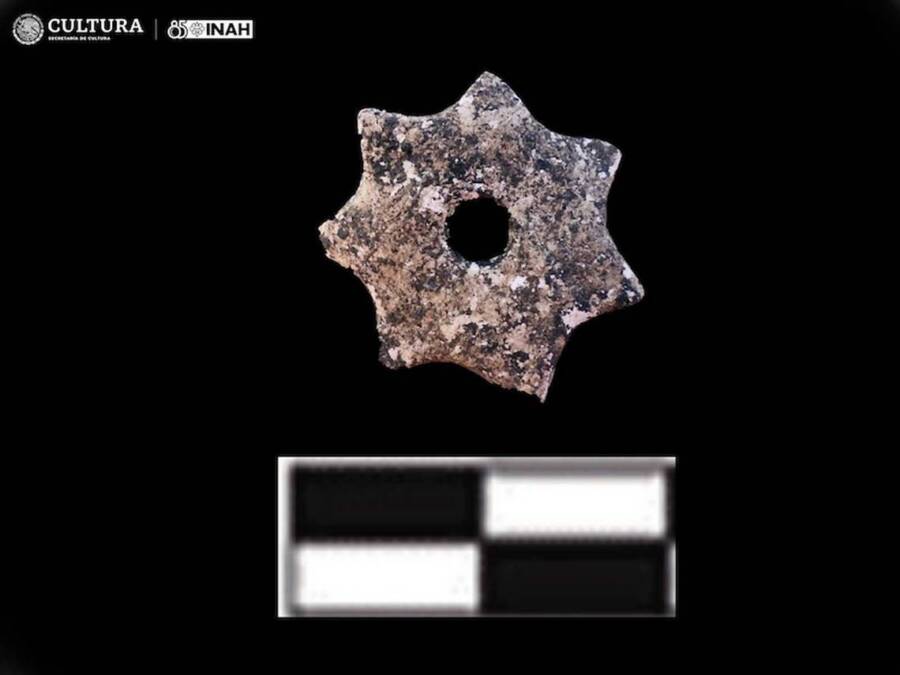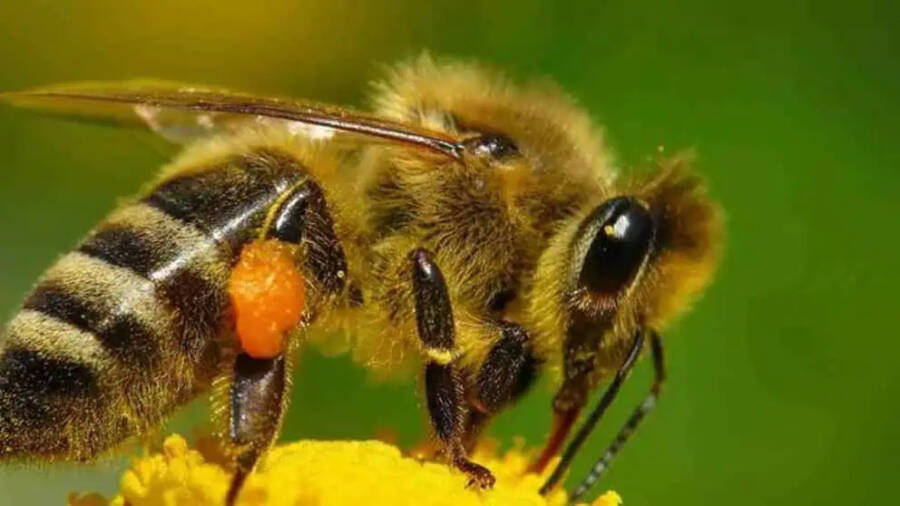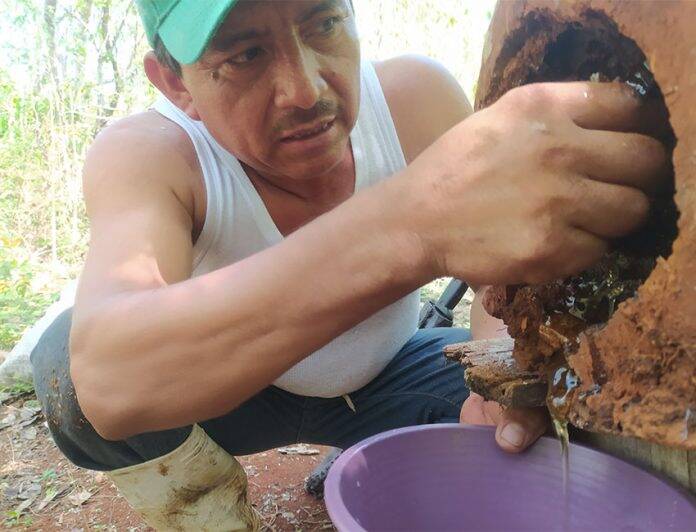
Instituto Nacional de Antropología e HistoriaA Maya lid used to plug a hollow log where bees were housed in order to collect honey.
Just this week, archaeologists from Mexico’s National Institute of Anthropology and History (INAH) announced the discovery of a treasure trove of centuries-old Maya artifacts, including beekeeping tools used to harvest honey from the culture’s “sacred bee,” the Melipona beecheii.
Discovered on the eastern coast of the Yucatán Peninsula in southeastern Mexico, these artifacts underline the importance of Melipona honey to the Maya.
Currently, researchers have collected hundreds of artifacts and are in the process of analyzing each one to paint a better picture of Maya culture.
The Discovery Of Maya Beekeeping Tools In The Yucatán
On May 20, archaeologists from INAH announced their discovery of a cache of Maya beekeeping tools near the Quintana Roo section of the Maya Train in the Yucatán Peninsula.
Originally, the team believed they’d stumbled upon the remains of a wall, but their discovery of jobón lids convinced them that they were instead looking at a meliponary, a site of honey cultivation. Jobón were hollowed-out logs that housed bees and they were capped with limestone lids known as panuchos.

Instituto Nacional de Antropología e HistoriaA star-shaped shell bead found at the site.
These jobón lids measured between 20 and 25 centimeters and dated to the Maya Postclassic Period (950-1539 C.E.).
“Only one of the lids is in a good state of conservation,” Carlos Fidel Martínez said in a statement from INAH, but “the other two [lids] have a high degree of erosion.”
In addition to the lids, researchers discovered ceramic, stone, and flint artifacts, including a red and orange cajete, or vase, as well as an axe, a hammer, and a star-shaped shell bead.
Overall, researchers have found 261 artifacts at the site and are in the process of analyzing each one.
The Maya Cultivation Of Melipona Beecheii Bees

Government of MexicoThe Melipona beecheii, the variety of bee that the Maya cultivated.
The cultivation of bees is a traditional practice in Maya culture. For centuries before Maya civilization as we know it all but disappeared, they harvested honey. Even today, Indigenous Maya in the Yucatán continue to use jobón to cultivate honey from the Melipona beecheii species of bee.
The Melipona beecheii is the Maya’s “sacred bee.” The Maya used its honey for trade, medicine, ceremonies, and food.
Melipona honey is slightly sour and less viscous than other types of honey. Today, Melipona honey is consumed for its antioxidant and anti-inflammatory properties.

Mark VialesAn Indigenous beekeeper extracts honey from a jobón, a hollow log.
According to archaeologist Raquel Liliana Hernández Estrada from INAH, the area where archaeologists discovered these artifacts was not inhabited by the elite class. Instead, Maya of the non-elite classes likely powered the cultivation of this important commodity.
“Most likely, we are in the presence of housing complexes from cities peripheral to ceremonial sites such as the Chacchoben Archaeological Zone and the Los Limones site,” Hernández stated.
Overall, researchers have remarked that this discovery may be Mexico’s greatest archaeological find in recent decades.
After reading about these Maya beekeeping tools, dive into the story of El Castillo, the largest Maya pyramid. Then, read about the hallucinogenic mad honey found in the mountains of Turkey and Nepal.